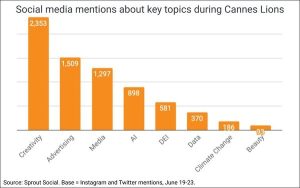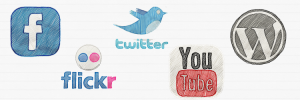An examination of the key characteristics of product-led growth, and how it differs from traditional marketing or sales-led strategies.
Product-led growth (PLG) is becoming an increasingly popular strategy among both B2B and B2C businesses. PLG is changing how organizations approach their product launches and expansion campaigns, impacting the role of marketing and sales in the process.
Let’s take a look at what defines product-led growth, how it differs from previous sales and marketing activities, and how to build your own PLG strategy.
Product-led growth delivers results
First of all, let’s look at why it’s worth your time learning about product-led growth in the first place: improved business performance. Part of the reason for the hype behind PLG is that it’s delivering some incredible results.
Publicly traded PLG companies are now valued at over $ 200 billion and are growing at 29.7% year-on-year in comparison with 16.8% growth for the broader SaaS market. These aren’t overnight success stories, but growth has been greatly accelerated by a laser-focused PLG strategy.
This is an important point, as it’s easy to mistakenly see product-led growth as a short-cut to success. Of course, it’s not—PLG is a carefully considered and methodical approach that requires close coordination between multiple departments, including sales, marketing, product management, engineering, design, customer success, and customer support.
Defining a product-led growth target audience
A typical marketing campaign is likely to target a key persona who is a senior decision-maker. Depending on the product and industry, this could be a CIO, CTO, IT Director, digital leader, or head of innovation. A marketing plan will be created and implemented to illustrate the value of the product to them from a broad commercial business perspective.
A product-led growth strategy turns this scenario on its head. The target audience is not the senior executive, but the end user. The product is designed and built to solve specific end user pains rather than drive a wide-ranging sweeping transformation of the enterprise’s business strategy or service delivery.
Think about Slack, Calendly, and Zoom. They all make potentially frustrating experiences relatively simple ones—chatting with groups of colleagues and sharing information; coordinating multiple calendars to find a meeting time that works for everyone; a reliable platform for video conferencing. While smart technology is clearly working hard behind the scenes, the UX is fluid and effortless. The end user benefits are quickly transparent without any explanation needed.
A low-value entry point
Investing in technology can be a costly exercise for an enterprise. Weighing up the pros and cons of a particular solution, comparing similar products in the same space, and attempting to calculate time-to-value and ROI is often catastrophic for tech vendors. Even after months of demos and negotiations, this is the time when the C-Suite lose their nerve and decide it’s not worth the risk.
Product-led growth is defined by a cheap entry point, in many cases free. With a “freemium” offer or a free limited trial, it’s quick and easy for users to sign up. Price is no barrier to uptake. Typical restrictions on the freemium offer may be:
- Limited features
- Limited capacity or storage
- Limited support
However, even if the product is free for a specific time period, until a threshold number of users is crossed, or until an enterprise license is required, value is offered before the paywall.
Due to this a PLG strategy will often be defined by shorter sales cycles and a lower customer acquisition cost (CAC). There is a wider top of the funnel, with more standard users and potential advocates engaging with the product.
Powering bottom-up product-led growth
Product growth comes from direct usage and adoption. It’s not the result of reading white papers or attending conferences to discuss a hot new trend or grand concept. The emphasis for product-led growth is very much “show, don’t tell.” Here’s the product, download a free version, start using it, and see quick benefits.
In this way successful product-led growth solutions are intuitive to use, needing no additional training or specialist skills. This is in stark contrast to many enterprise solutions that inevitably require time and resource—from both the vendor and the user—to implement the tech and get up to speed.
This ease of use also delivers another key trait of a product-led growth solution: virality. PLG tech is typically easy to share with friends and colleagues, and in many cases the sharing process is an intrinsic part of the product.
For example, a colleague invites you to join a conversation on Slack. You get invited to a meeting on Zoom. You are shared the results of a survey displaying “Powered by SurveyMonkey”. When it comes to product-led growth, sharing is caring.
Focus beyond acquisition
Marketing and sales-led growth will typically place a priority on acquisition. The principal aim is to get as many new customers signed up as quickly as possible. Whatever happens after that is the responsibility of the customer support or client success teams (or whatever your business may call this function.)
The downside to this approach is a potential lack of cohesion and collaboration between departments. Marketing and sales are only focused on acquisition metrics. This is why churn is more likely for marketing-led companies.
In contrast, product-led growth companies tend to focus equally on:
- Acquisition
- Activation
- Retention
- Referrals
Selling a license or subscription is not the end goal. A low price point means acquisition in and of itself isn’t the important factor. Adoption is the crucial aspect for a product-led growth strategy, as this is by definition what powers growth. This means that PLG companies will also work hard to ensure that product activation, retention, and advocacy are not overlooked.
Internal structure within product-led growth companies
By looking beyond acquisition as the most important metric, product-led growth companies are more likely to adapt their internal structure. Rather than operating in silos, all teams are unified around the product—how to optimize it, drive engagement, make it easy to share, and ultimately monetize it.
Product-led growth companies are typified by faster test and learn environments. They are very data-driven, using analytics to move at speed, see which features and updates are popular and which are failing to resonate, and switch variables on and off to continuously learn and optimize.
UX is critical, which is why all teams will collaborate together to remove friction in the customer journey.
Is product-led growth right for you?
Product-led growth is not here to consign traditional marketing or sales-led strategies to history. By definition PLG is an approach that needs to align with a specific type of product that offers clear end user value. It’s another tool for forward-thinking marketers (and businesses) to consider.
By understanding the basic concepts of a product-led growth methodology and the benefits it delivers, you are better positioned to determine whether it’s right for you. You can also ensure that you align your product development and internal structure accordingly to increase the likelihood of success.
Business & Finance Articles on Business 2 Community
(64)
Report Post






